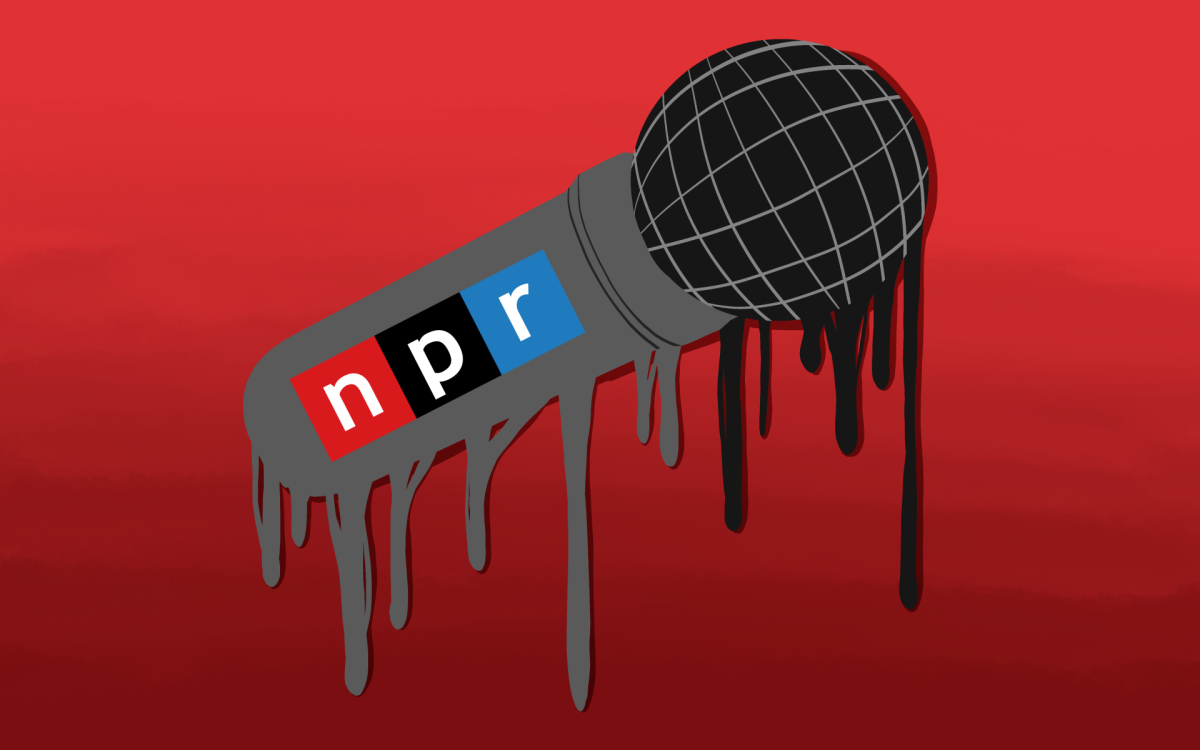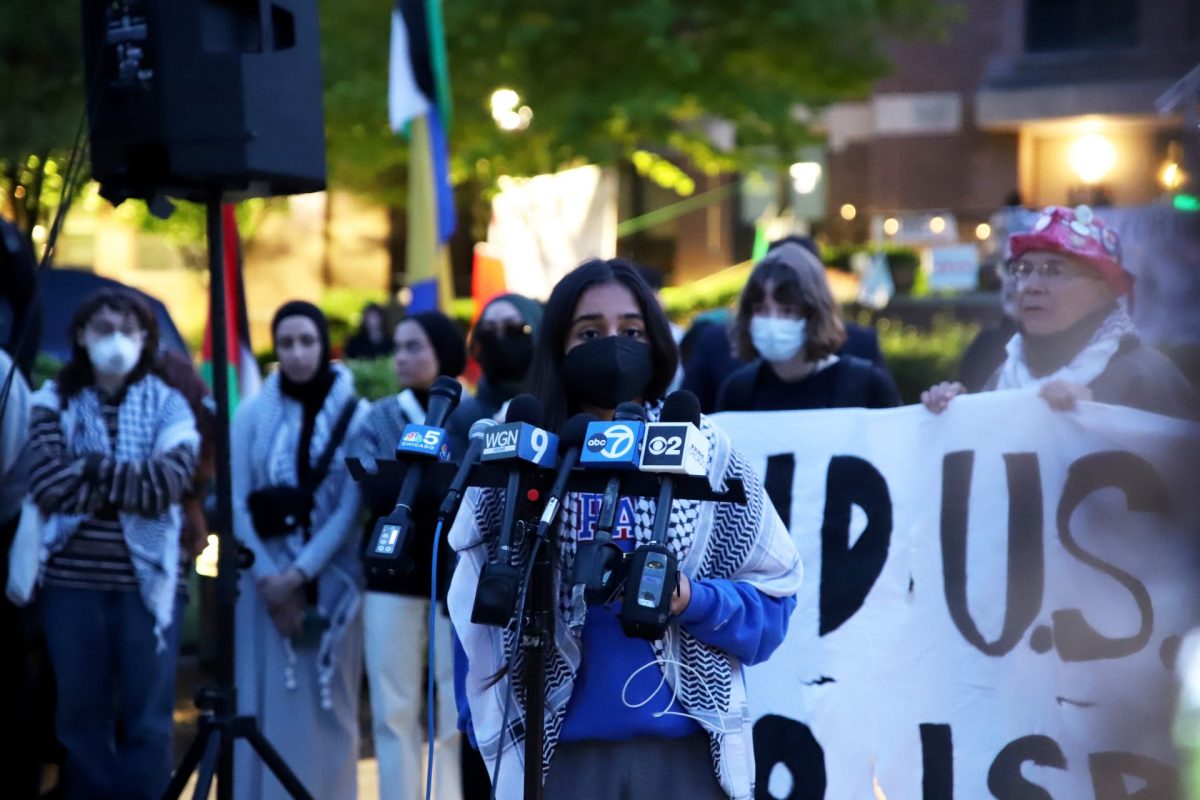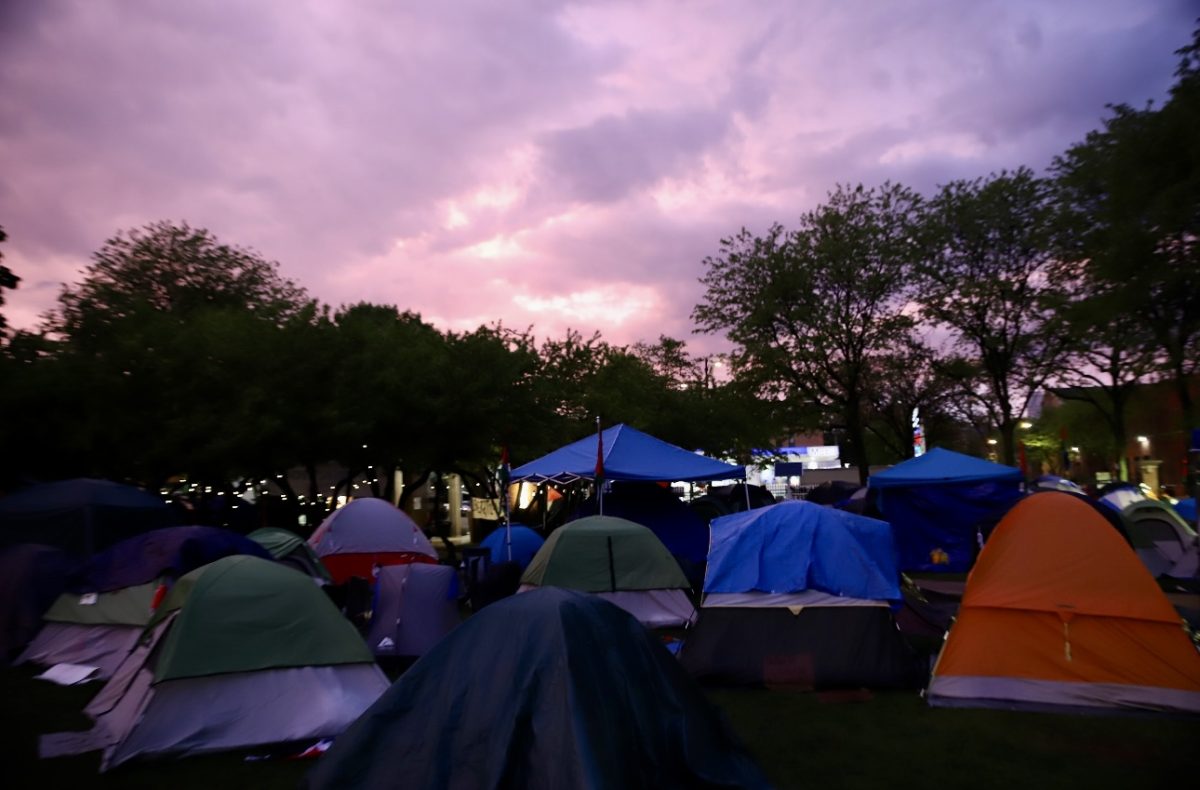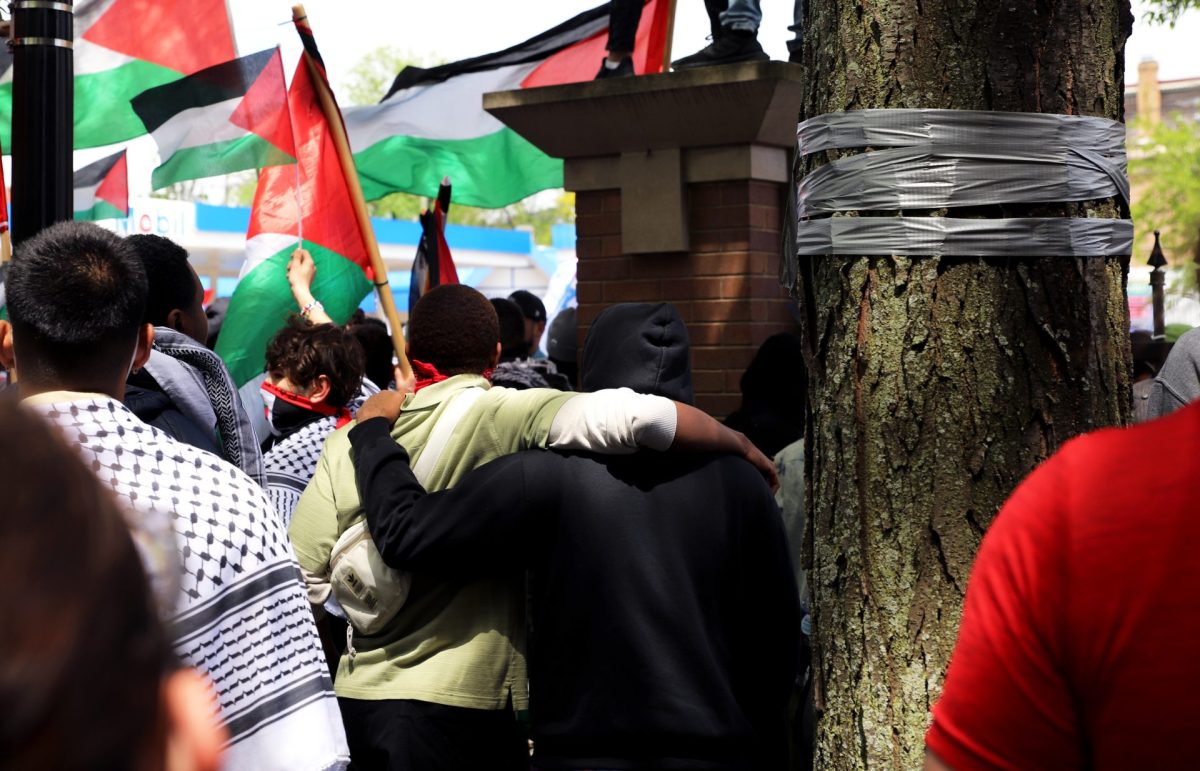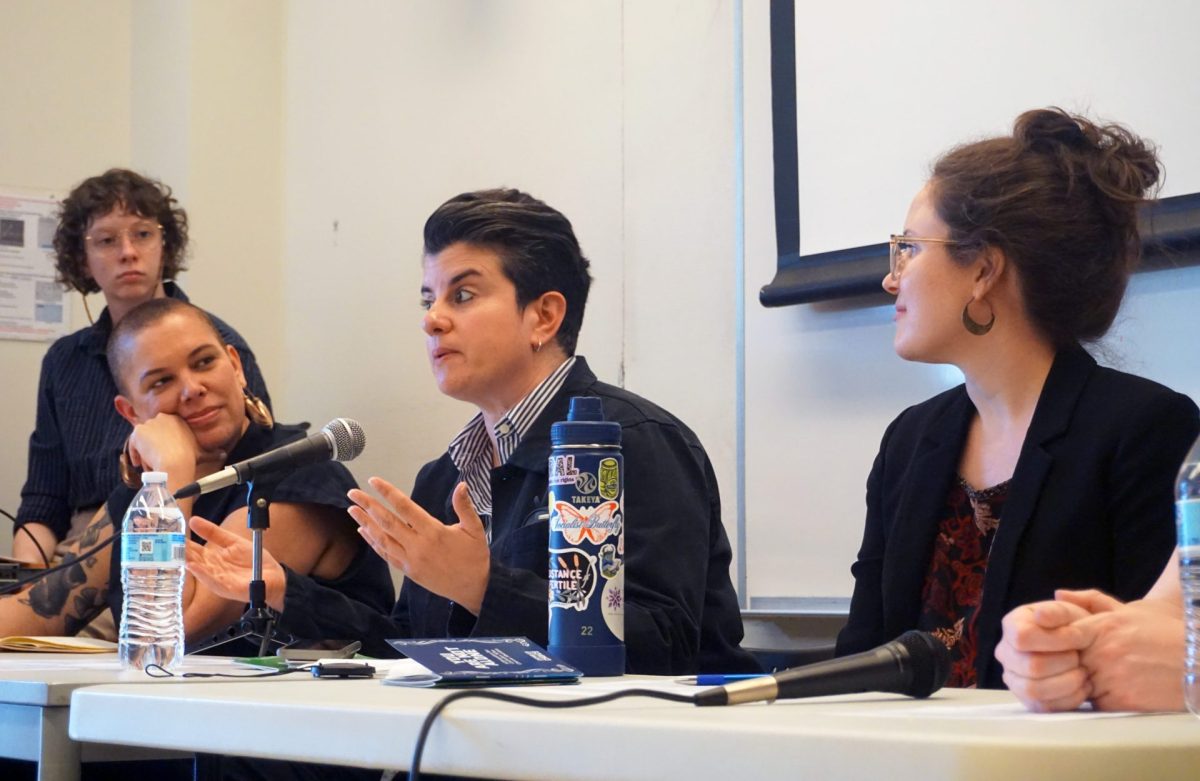Former DePaul University president, Rev. John T. Richardson, read from his memoir “The Playful Hand of God: Memoirs of John T. Richardson, C.M.” in the John T. Richardson Library’s newly renovated program room on Thursday night, Oct. 20.
DePaul staff, faculty and students attended to hear the wit and wisdom of one of the university’s most influential administrators. History professor Amy Tyson described Richardson as a “living history of DePaul.”
The university underwent some of its biggest and most ambitious changes on Richardson’s watch. The 1991 purchase of the old Goldblatt’s department store building in the South Loop — the building that would later become the DePaul Center – was, as Richardson described it, “a $67 million gamble” by the university.
But, thanks to some canny dealing by the former law professor, Richardson negotiated the purchase of the prime Loop real estate for just $1 million. The building was owned by the city when DePaul bought it and it certainly helped, Richardson remarked with a grin, that many members of City Council had once been his law students, including Ald. Ed Burke.
Richardson affectionately referred to the powerful South Side alderman as “Eddie.”
Under his stewardship, the expensive rehabbing of the Goldblatt’s building was underway. It was no easy task, recalled Richardson.
“The rats controlled the lower floors. The pigeons controlled the upper floors.”
The completion of the DePaul Center played an important role in the revitalization of the South Loop.
Richardson presided over the transformation of DePaul from a small, Catholic commuter school to the diverse, urban university it is today. Three new residence halls were built during his time as president and DePaul’s reputation grew as the university began attracting students from out of state. Enrollment reached 16,500 by the end of Richardson’s presidency, according the DePaul University Libraries website.
But Richardson’s legacy is more than bricks and mortar. He left a lasting mark on DePaul’s academics. The
International Human Rights Law Institute, the Institute for Business Ethics and the Center for Urban Education were all founded under his direction.
Many of the faculty members present at the reading expressed gratitude to Richardson for his style of “stewardship management” which holds academic freedom in high regard.
“DePaul has never lost,” Richardson said, for allowing students and faculty to express unpopular views.
Richardson recalled stories of how his management style had, at times, gotten him into trouble with the Catholic Church hierarchy at the Chicago Archdiocese and even at the Vatican in Rome. But it certainly endeared him to his students.
Brent Nunn, the DePaul Library Outreach Coordinator, shared the story of a troubled young Vietnam veteran who was one of Richardson’s students. The young man had gotten a hold of a gun and was cornered by Chicago Police.
When police asked him who he would like to talk to, the young man told them “Father Richardson.” Police called Richardson at home in the middle of the night and the old priest went out to bring peace to yet another conflict.
Resolving controversy was a theme in Richardson’s career at DePaul, said Nunn.
Richardson’s tenure as President of the University ended in 1993 when he became Chancellor of DePaul. In 1997 he left for Kenya, Africa, to teach seminary. He returned last year to teach again at DePaul.
Reflecting on his long and distinguished career at DePaul, Richardson said he would like for students to “participate fully in the life of the university.”
At 88 years-old, Richardson is certainly still participating fully in what life has to offer.
“I’m still an agent of change” he said with youthful vigor.


